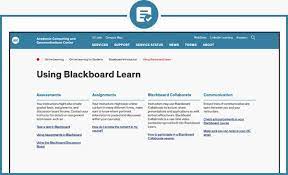Table of Contents
How to Calculate PF Contribution Employees’ Provident Fund balance and interest ,EPF Calculator – Calculate the Fund Value Post: The companies they work for provide the Workers Provident Fund (EPF). This is usually deducted from his monthly salary and deposited in his PF account. If Rs.2000 is deducted from one’s salary, the owner of the company has to deposit the same amount. The money thus saved will be available to the worker as a pension fund.

EPF Passbook is an online facility provided by the Employees Provident Fund Organization (EPFO). Passbook contains all the information and other important details of the transactions made by an employee and its employer (which may be strong) in the EPF and Employee Retirement Plan (EPS) accounts.
Contributions made on a monthly basis from both parties are reflected in the passbook with accrued interest on the amount collected. If you have worked with more than 1 employer, you will have multiple EPF accounts and each account will have a different passbook.
However, if you have registered yourself using the Universal Account Number (UAN) on the EPFO’s official website, you can quickly access your passbook. Details and updates will be available to you 6 hours after you register. Also, you can download Passbook with one click.
PF Contribution
PF Contribution consists of two parts namely Employee and Employer Contribution.
Employee Contribution of PF
12% of the basic salary of an employee is paid from the base salary + internal rate. Some companies add extra payments to their employees, such as commissions.
Employer Contribution of PF
The same amount of 12% will be paid into the employee’s PF account on behalf of the employer (employee contribution). Apart from this the contribution for EDLI, ESI etc. will be made on behalf of the employer.
Some companies charge 10% instead of 12% of employees’ monthly salary. Similarly only the same 10% contribution will be paid on behalf of the employer. This only applies to companies with less than 20 employees per organization and recommended by the Employee Provident Fund Organization (EPFO).
How to Calculate PF Amount From Salary
Below I have explained how to calculate the PF amount from an employee’s monthly salary. PF account is generally paid into two types of schemes namely EPF and EPS.
EPF (Employees Provident Fund) is a workers’ deposit fund. The money paid into it gives us the facility to take a certain amount when we need it.
Also a certain amount of interest (currently 2020-2021 – 8.50%) is paid on the amount paid into the EPF. This interest rate is fixed by the Central Government for each financial year.
EPS (Employee Pension Scheme) is a workers’ pension scheme. The scheme facilitates the workers to receive a certain amount of pension each month during the retirement period. No interest will be charged on the amount paid under this scheme. Only the pension benefit is available instead.
12% of the employee’s contribution is deposited in the EPF scheme. Of the employer’s contribution of 12%, 8.33% is deposited in the EPS plan and the remaining 3.67% in the EPF plan.
The role of EPF and EPS is illustrated below with an example to make it easier to understand.
Let us assume that the basic salary of a worker working in a company is Rs. 18,000 plus both.
Typically, Employer 12% Contribution is divided as follows:
- 3.67% into Employee Provident fund
- 8.33% into Employees pension scheme
- 0.5% into Employees’ Deposit Linked Insurance Scheme (EDLIS)
- 0.01% towards EDLIS Administrative Charges
If the employee income is below or equal to 15,000/- (Compulsory)
- Employees’ Basic Pay + DA: Rs 15000.
- Employee contribution towards EPF: 12% x 15000 = Rs.1,800/-
12% Employer contribution will be divided into 2 parts i.e. 8.33% towards Employees pension scheme and rest 3.67% towards Employee Provident fund.
- But employer contribution towards provident fund is Rs.15,000 x 3.67% = Rs.550.5/-
- Remaining 8.33% towards Employee pension scheme (EPS) that is 15,000/-x 8.33% = Rs.1249.5/-.
If the employee income is above 15,000/- (Exempted but Voluntary)
There are 3 methods of computing the contributions if the income is above the threshold of Rs 15000. Any one of these methods can be adopted by an employer. The most commonly used is the first method.
What is an EPF Calculator?
Employees PF Calculator is an online tool that helps you estimate the EPF corpus when you retire. You will need to provide basic details such as retirement age, basic monthly salary, expected annual salary increase and contribution to the EPF.
How to check pf balance
- PF Passbook
- Mobile App
- Missed Call Service
- SMS Service
What are the benefits of EPF?
- This will save you money in the long run.
- There is no need to invest only one, the total amount. Deductions are made on a monthly basis from the employee’s salary, which helps save a large amount of money in the long run.
- This can be a financial aid to an employee in an emergency.
Frequently Asked Questions
Can I withdraw my EPF balance before retirement?
Yes, an employee can withdraw the EPF balance before retirement under certain conditions, such as for the purchase of a house, for higher education, or in case of unemployment.
Is the interest earned on the EPF account taxable?
No, the interest earned on the EPF account is tax-free.
How can I check my EPF balance online?
You can check your EPF balance online by visiting the EPFO portal and logging in with your UAN number and password.
Final Words
Employees’ Provident Fund (EPF) is a mandatory savings scheme for salaried employees in India, which helps them to save a part of their salary for their retirement. In this article, we discussed how to calculate the employee’s and employer’s contributions, the employee’s provident fund balance, and the interest earned on the EPF account. EPF balance can be checked


